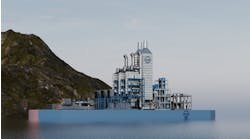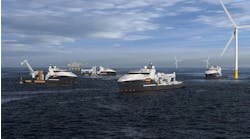Offshore staff
ABERDEEN, UK – The Oil & Gas Innovation Centre (OGIC) has signed four new offshore project agreements involving grants totalling £230,000 ($285,000).
Under the latest project, Exnics will work with Heriot-Watt University in Edinburgh to develop a Thermoelectric Generator (TEG) to support its Hot Rings system, which harnesses the heat from subsea pipelines and converts it to DC electrical power.
The plan is to improve performance of the product for future deployment and to increase the range of applications where power from waste heat can be used.
In the second project, Iron Ocean is developing a compression fit garment to boost the chances of survival of offshore personnel submerged in the sea.
This would be worn under current offshore survival suits and would improve heat retention, be slash-resistant, generate heat, and resist fire.
A coating will be designed to deliver a thermal reaction that will provide warmth to the wearer with the reaction lasting at least one hour. Iron Ocean will work with Heriot-Watt University’s School of Textiles and Design to construct a prototype which should be tested, certified, and ready for use within a year.
Core Specialist Services (CSS) and partner Hydrophilic AS are working with the University of Strathclyde in the third project to develop a pressure probe. This will enable estimation of the depth to the oil/water contact without the need to drill through it.
CSS and the University of Strathclyde are currently working on proof of concept, leading ultimately to development of a functioning tool.
Finally, Subsea Deployment Systems will work with the University of Strathclyde on a system for installing large subsea structures in hostile environments using small crane vessels.
The aim is to cut the cost, extend the operating window, improve safety, and reduce the environmental impact of subsea installation operations.
The subsea deployment system will involve use of a fully submersible deployment vessel comprising buoyancy modules mounted on structural steel frames, in order to provide sufficient buoyancy to render the vessel and payload neutrally buoyant.
Tank tests are under way with the University of Strathclyde to validate the basic concept.
03/20/2017


